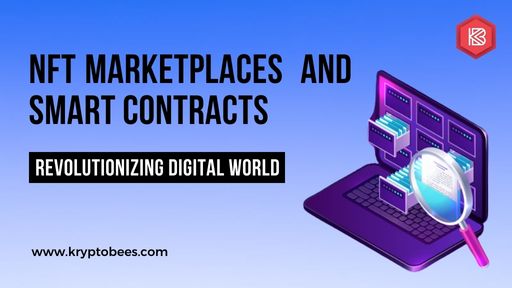In recent years, the world of digital art and collectibles has been turned upside down by the rise of NFTs. These unique digital assets have gained widespread attention and have become a hot topic of conversation among artists, collectors, and investors. At the heart of the NFT ecosystem lies the technology that makes it all possible: smart contracts. Here, we'll explore the fascinating intersection of NFT marketplaces and smart contracts and how they are revolutionizing the digital art world.
Understanding NFTs
Before diving into the role of smart contracts in NFT marketplaces, it's essential to understand what NFTs are. NFTs are digital tokens that represent ownership of a unique item or piece of content, such as digital art, music, videos, virtual real estate, or even tweets. Unlike cryptocurrencies like Bitcoin or Ethereum, which are fungible and interchangeable, NFTs are non-fungible, meaning each one is distinct and cannot be replicated or replaced.
NFT Marketplaces: Where Digital Meets Tangible
NFT marketplaces are online platforms where users can buy, sell and trade NFTs. These marketplaces have opened up new possibilities for artists and content creators to monetize their work, providing a direct connection between creators and collectors without the need for intermediaries like galleries or record labels.
Some of the most popular NFT marketplaces are OpenSea, Rarible, and SuperRare. These platforms allow users to create, mint, list, and auction NFTs, creating a vibrant digital art economy.
The Role of Smart Contracts
At the core of NFT marketplaces are smart contracts, self-executing agreements with the terms of the contract directly written into code. Smart contracts play a crucial role in NFT transactions by automating various processes, ensuring security, and providing transparency. Here's how they work:
Minting: When an artist or creator wants to tokenize their work as an NFT, they often use a smart contract to mint it. Minting involves creating a new NFT with specific properties, such as the title, description, and any royalties the creator wishes to receive for future sales.
Ownership Transfer: When a collector purchases an NFT, the smart contract ensures that ownership rights are transferred from the seller to the buyer automatically. This eliminates the need for intermediaries like escrow services.
Royalty Payments: Smart contracts can be programmed to automatically send a portion of each resale to the original creator. This "royalty" feature has been a game-changer for artists, allowing them to earn a commission on secondary market sales, potentially generating a steady stream of income.
Decentralization: NFT marketplaces often operate on blockchain networks like Ethereum, where smart contracts are executed. This decentralization ensures that transactions are transparent, tamper-resistant, and secure, reducing the risk of fraud.
Programmability: Smart contracts are incredibly versatile and can be customized to meet the specific needs of artists and collectors. This programmability allows for innovations like "unlockable content," where additional digital files or perks are automatically delivered to the buyer upon purchase.
Conclusion:
NFT marketplaces and smart contracts are transforming the digital art world by providing a secure, transparent, and efficient way for artists to monetize their work and for collectors to own unique digital assets. As technology continues to evolve, we can expect even more innovations in the NFT space, further reshaping how we create, buy, and sell digital art and collectibles.





Comments